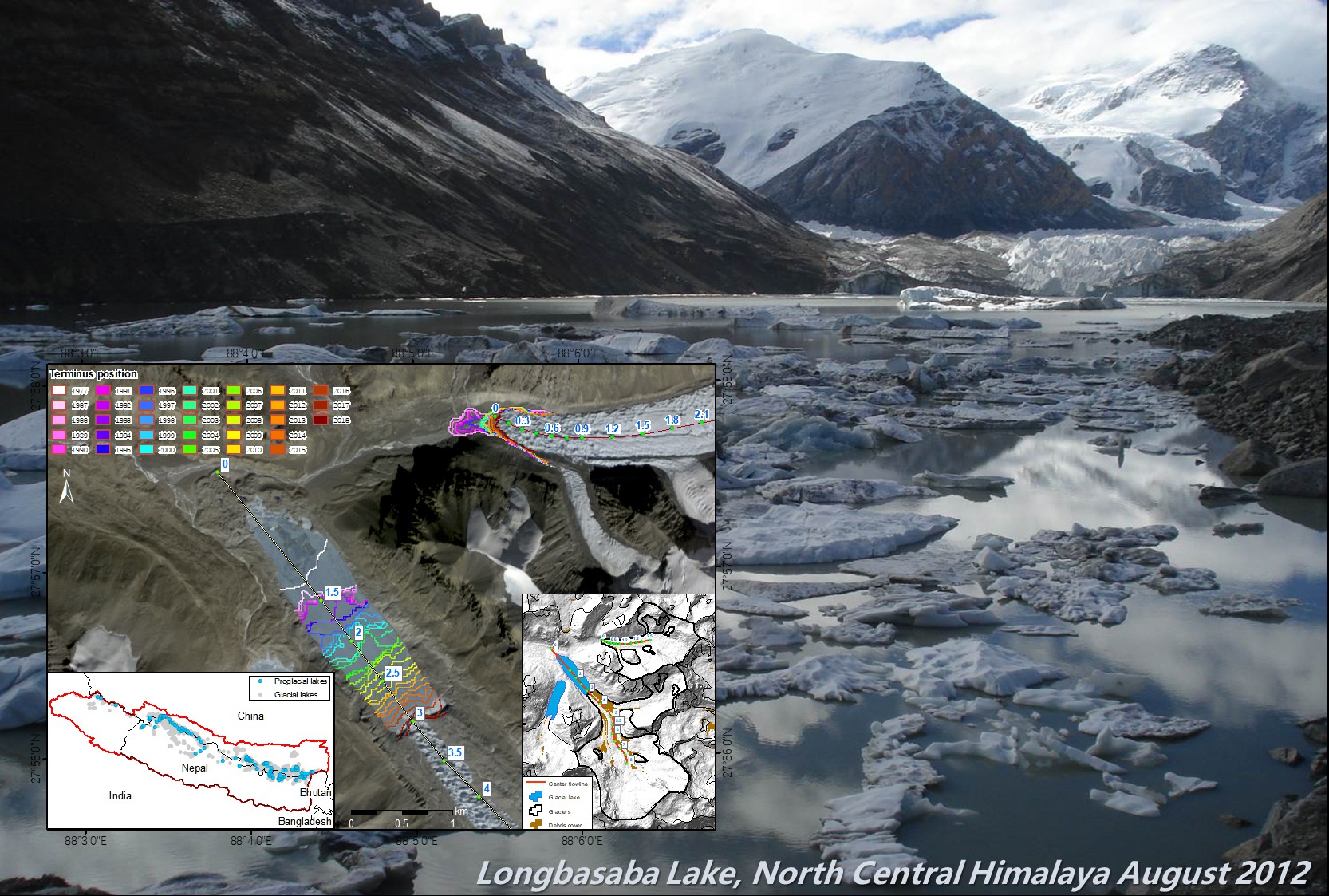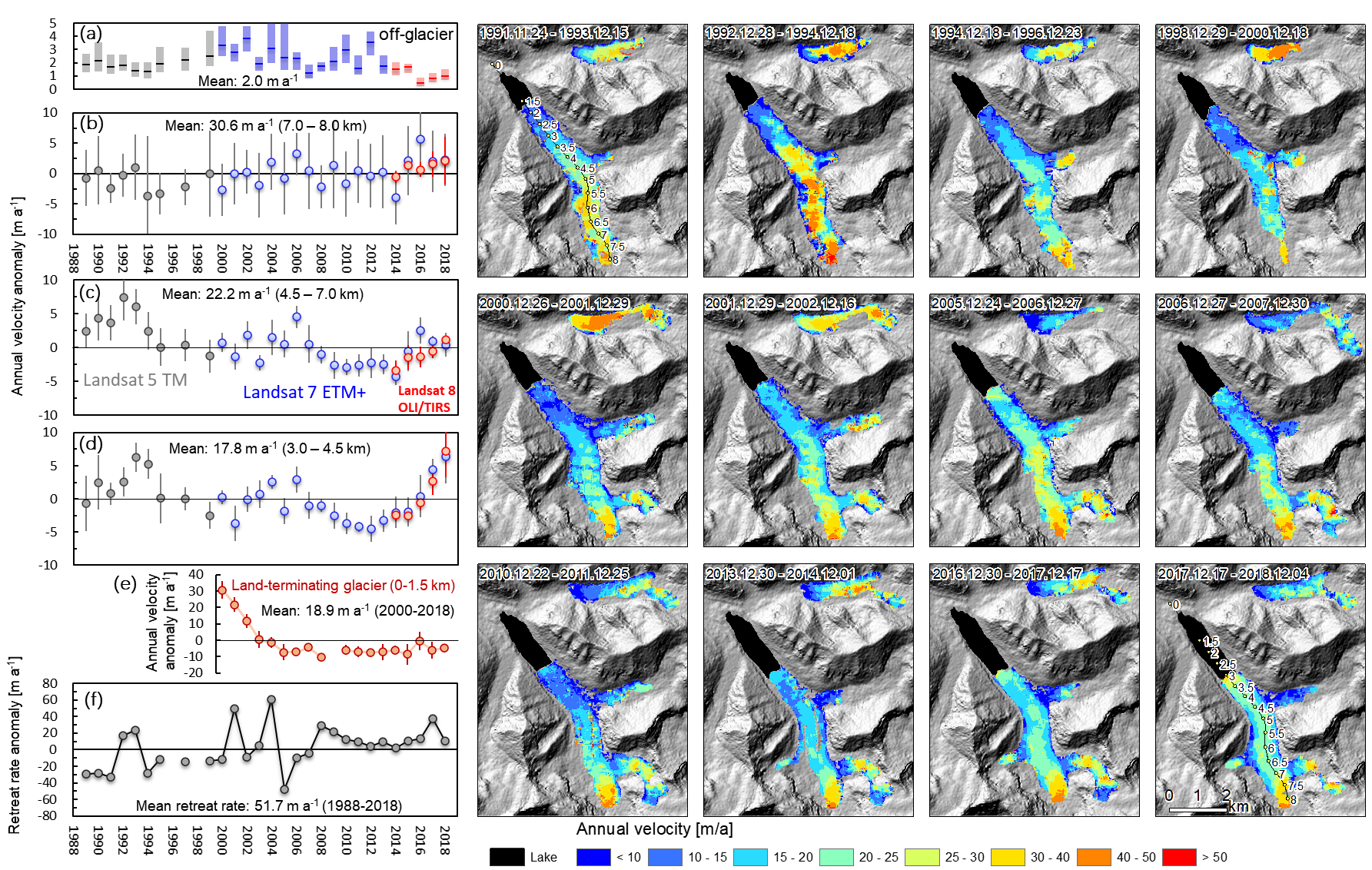Proglacial lake and lake-terminating glacier is a typical glacier-lake system, which is commonly found in southeastern Tibet and the Himalayas in western China, as well as in Alaska, South America, New Zealand, et al. The Central Himalaya holds the largest glacier area and ice volume compared to the western and eastern parts of the Himalayan arc. Observations document a notable mass loss of glaciers here during past decades, even though they cover large areas in high altitudes. Among all glaciers, lake-terminating glaciers, which are widely distributed in the Central Himalaya, have shown rapid retreat and thinning combined with acceleration of ice transport. The rapid retreat of most lake-terminating glaciers is accompanied by the expansion of proglacial lakes, of which some pose notable risks to Himalayan mountain communities from glacier lake outburst floods (GLOFs) and may lead to trans-boundary hazard impacts in certain regions of Nepal, Bhutan and Chinese Tibet.
A research team lead by Prof. LIU Qiao from Institute of Mountain Hazard and Environment, Chinese Academy of Sciences (IMHE-CAS), in cooperation with the Bavarian Academy of Sciences, Yunnan University and Hunan University of Science and Technology, published a report on the above-mentioned glacier and proglacial lake interactions in the international authoritative journal of geoscience, Earth and Planetary Science Letters.
Using an image feature tracking method applied on optical satellite images between 1989 and 2018, the research team presented multi-decadal surface velocity dynamics of the Longbasaba Glacier, a rapid retreating lake-terminating glacier in the Chinese Himalaya. They showed that the temporal variation of longitudinal velocity distribution indicates an upward propagation of the lake-ward acceleration (namely a down-glacier inversion of strain from compression to extension). This propagation is coupled to the retreat of the glacier front and occurs along the lowermost 1~1.5 km lake-adjacent section as the proglacial lake expands. The most recent acceleration of the near-lake section since 2012 has likely facilitated a dynamic thinning on its upper sections, where flow acceleration started two years later in 2014. Their results confirm the strong influence of the proglacial lake on ice flow dynamics and suggest that lake-ice interactions are important to consider when analyzing, interpreting or modelling dynamics of rapidly retreating lake-terminating glaciers in the Himalayas as well as around the world.
The research was funded by the National Natural Science Foundation of China (NSFC 41871069 and 41571104), NSFC Key Project for international cooperation (41761144077) and the Kathmandu Center for Research and Education, Chinese Academy of Sciences-Tribhuvan University. The research titled Interannual flow dynamics driven by frontal retreat of a lake-terminating glacier in the Chinese Central Himalaya has been published online in Earth and Planetary Science Letters.

Figure 1. Comparable retreating history of the lake-terminating Longbasaba glacier and a nearby land-terminating glacier between 1977 and 2018 (Imaged by LIU Qiao et al.).

Figure 2. Mean annual surface velocity changes derived from Landsat optical image pairs between 1989 and 2018 for (a) the off-glacier region, the three sections (b: 3.0-4.5 km, c: 4.5-7.0 km and d: 7.0-8.0 km) of the lower 8 km part of Longbasaba Glacier and (e) the lower 1.5 km of a nearby land-terminating glacier. Boxplot (0.25, 0.5 and 0.75 quartile) of the off-glacier area velocities indicate the measurement uncertainties for individual year (Imaged by LIU Qiao et al.).
Contact:
Prof. LIU Qiao
Institute of Mountain Hazards and Environment, Chinese Academy of Sciences
Chengdu, Sichuan, 610041, China
Tel: 13547887225
E-mail: Liuqiao@imde.ac.cn
